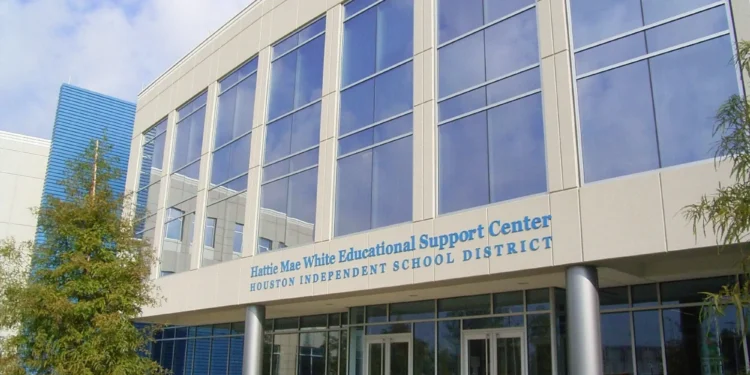April 7, 2025 Story by: Editor
Fewer than one in four Black and Hispanic students from Houston ISD’s Class of 2018 earned a college degree within six years — a statistic HISD academic leaders say underscores a serious crisis that has left thousands of underserved students unprepared for success in today’s workforce.
Overall, about 29% of HISD graduates from 2018 completed college by 2024, a marginal increase from the 28% seen in the prior class. However, this districtwide figure masks wide disparities in college completion rates based on race, income level, and high school attended.
According to data shared by the district, white students from the Class of 2018 were more than twice as likely as their Black and Hispanic peers to graduate from college within six years. Asian students, meanwhile, were about three times more likely to do so.
The most recent college graduation data provided by HISD comes from the National Center for Education Statistics (NCES) and pertains to the Class of 2018.
A Crisis at the Core
“Only 50% of our kids go to college and, of that, so few of them graduate … and only about 12% of our kids are going through the pathways that lead into strong career options, and so really at the heart of this, the data is telling us that we actually are in a crisis,” said Kristen Hole, HISD’s Chief Academic Officer, in an interview with the Houston Chronicle last year. “These numbers are very severe.”
Experts in K–12 education warn that if these trends continue, the long-term effects could be devastating — not only for the lifetime earning potential of thousands of Houston’s students but also for the city’s economic future.
A projection from the Georgetown University Center on Education and the Workforce estimates that by 2031, roughly 40% of jobs in Texas — including those in business, healthcare, education, engineering, and finance — will require at least an associate degree. That timeline coincides with the year HISD’s current 12th graders will be entering the workforce.
“You have a significant number of Texans who are not graduating from college with any kind of degree or certification. It creates this problem where you’re importing a lot of talent,” said Mary Lynn Pruneda, director for education and workforce policy at Texas 2036. “Well, we have wonderful people here in our state who should and could be able to fill those jobs.”
Black and Hispanic Students Face the Steepest Challenges
While about half of HISD graduates in recent years have enrolled in college within one year, a much smaller portion actually earn a degree. Outcomes are especially poor for Black and Hispanic students, who make up the vast majority of HISD’s graduating classes.
According to NCES data, 24% of Hispanic and 23% of Black students from the Class of 2018 earned a college degree within six years. In contrast, around 50% of white graduates and two-thirds of Asian graduates completed college during the same period.
Andree Osagie, HISD’s deputy chief of college, career and military readiness, emphasized that these numbers are not acceptable.
“Ultimately, our goal is really looking in the future to making sure that we are preparing students in Houston and we’re preparing students in Texas … to go to college and be successful in college, so that when they do graduate, they could have that standard of living that we do all want and we hope to get,” Osagie said.
He added that HISD is aiming for 100% of college-enrolled students to earn a degree within six years.
Cary Wright, CEO of Good Reason Houston, expressed outrage over the disparities.
“As a community of Houston, we should be up in arms about this,” Wright said. “I think it represents a systematic failure of our state’s largest school district to organize itself in a way where students who have the greatest needs get the greatest share of resources to set them up to be successful in life.”
Disparities Begin Early and Persist
Achievement gaps by race in HISD start early. In 2024, white and Asian third graders were at least 15 percentage points more likely than their Black and Hispanic peers to pass reading and math sections of the State of Texas Assessments of Academic Readiness (STAAR). These gaps often persist throughout students’ academic careers.
By the time they graduated, more than two-thirds of Black and Hispanic students from the Class of 2023 failed to meet Texas’ college-readiness benchmarks in reading and math.
School-Level Differences Widen the Gap
The disparities are also apparent when broken down by school. At some campuses, especially those serving predominantly low-income, Black and Hispanic populations or categorized as specialty schools, fewer than 10% of graduates from the Class of 2018 earned a college degree within six years.
Kashmere High School posted the lowest rate among traditional high schools — only 5% of its 2018 graduates earned a college degree. Other campuses, including Booker T. Washington, Sterling, and Wheatley high schools, also had graduation rates of 10% or less.
In contrast, Carnegie Vanguard High School — HISD’s only school where all students are classified as gifted-and-talented — boasted an 83% college graduation rate, the highest in the district.
Though most schools have shown improvement since 2016, only seven campuses had at least half of their 2018 graduates earn a degree by 2024.
Closing the Gaps
In an effort to raise college readiness and success, HISD has been increasing access to advanced coursework. During the 2023–24 school year, the district saw a 16% rise in students enrolled in such courses. The biggest gains came from OnRamps dual-enrollment programs, where participation and pass rates quadrupled in a year.
Even with these efforts, inequities persist. Around 38% of 2023 graduates met college-ready standards in both reading and math, but white and Asian students were still twice as likely as their Black and Hispanic classmates to meet these benchmarks.
“What drives our work is for 100% of the students that have demonstrated readiness and willingness to attend college to complete college within that reasonable time frame of four to six years,” said Osagie. “Yes, the data does not show that we’re there yet, and most districts in the state and in the country are not there, but I think for us, that is what drives our work.”
Looking Ahead
Due to the six-year lag in graduation data, recent reforms and initiatives — including those introduced during the state’s takeover of HISD — won’t be reflected in outcomes for several more years. But with thousands of students set to graduate this June, the urgency to improve remains higher than ever.
Source: Houston Chronicle

















